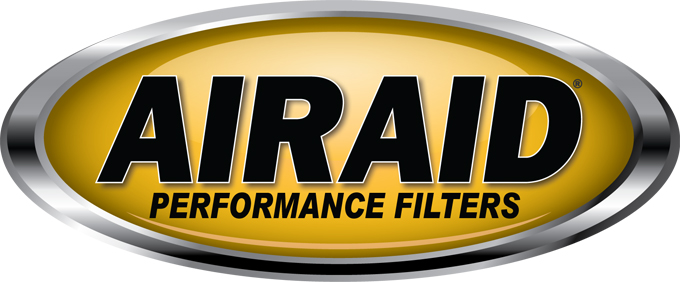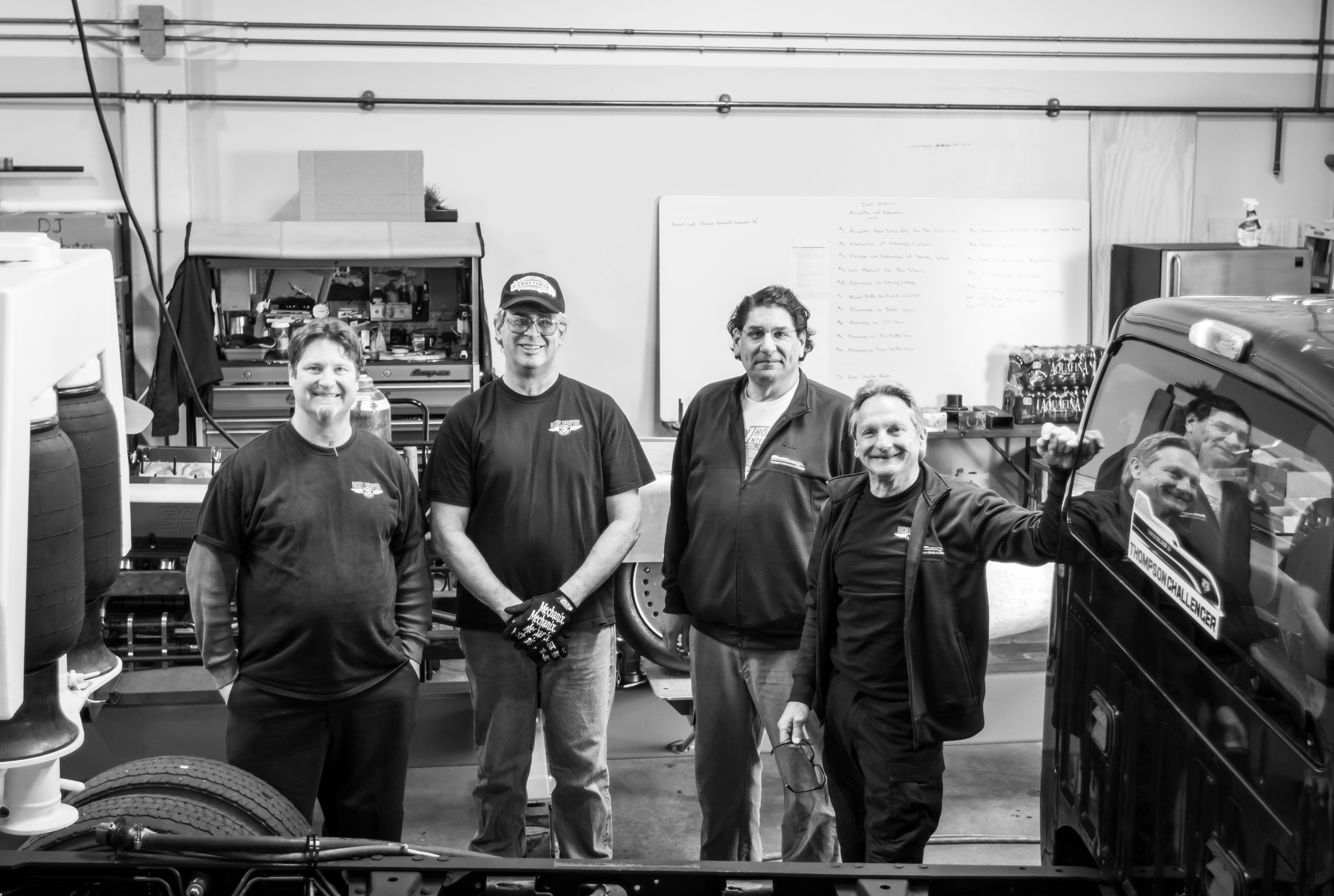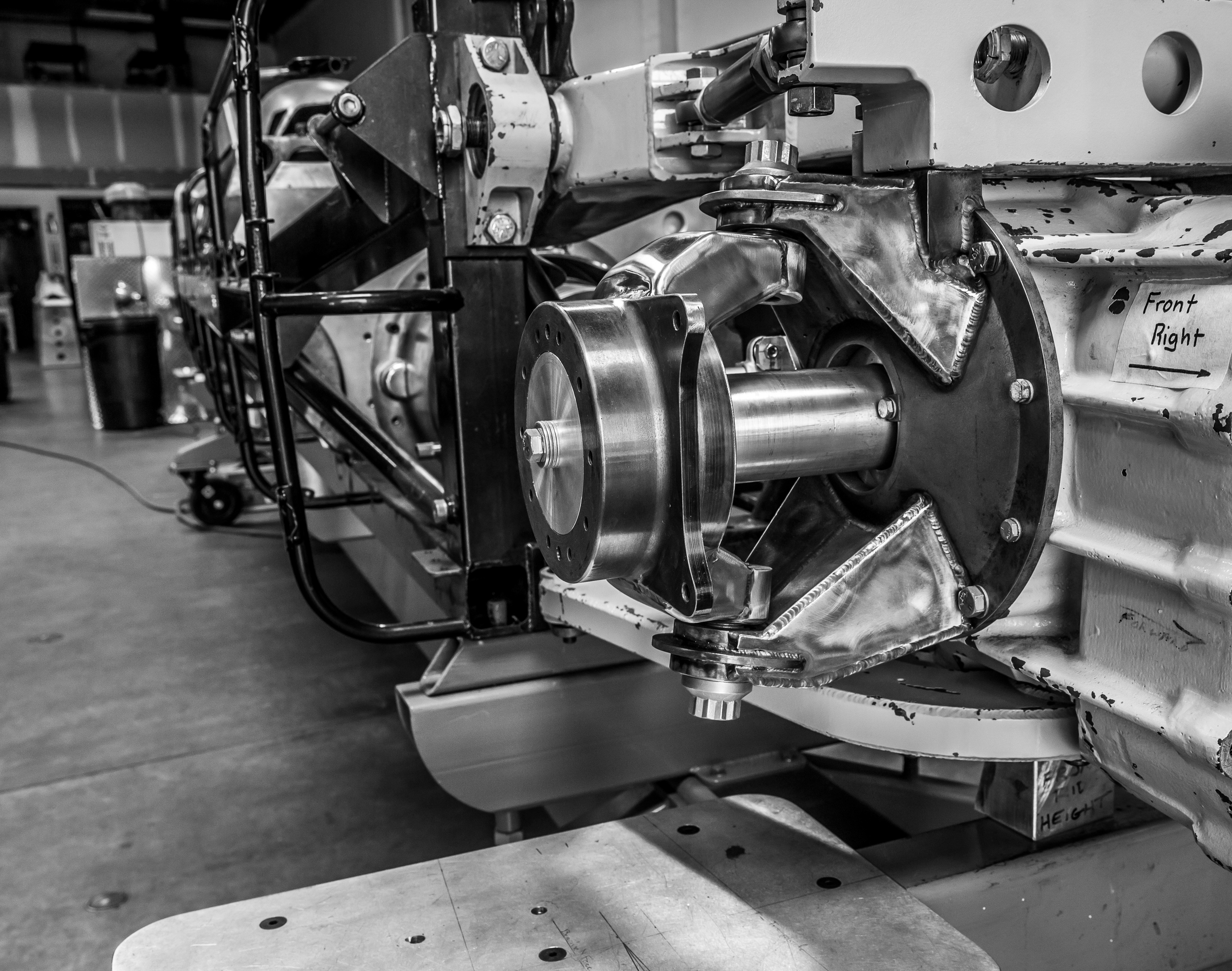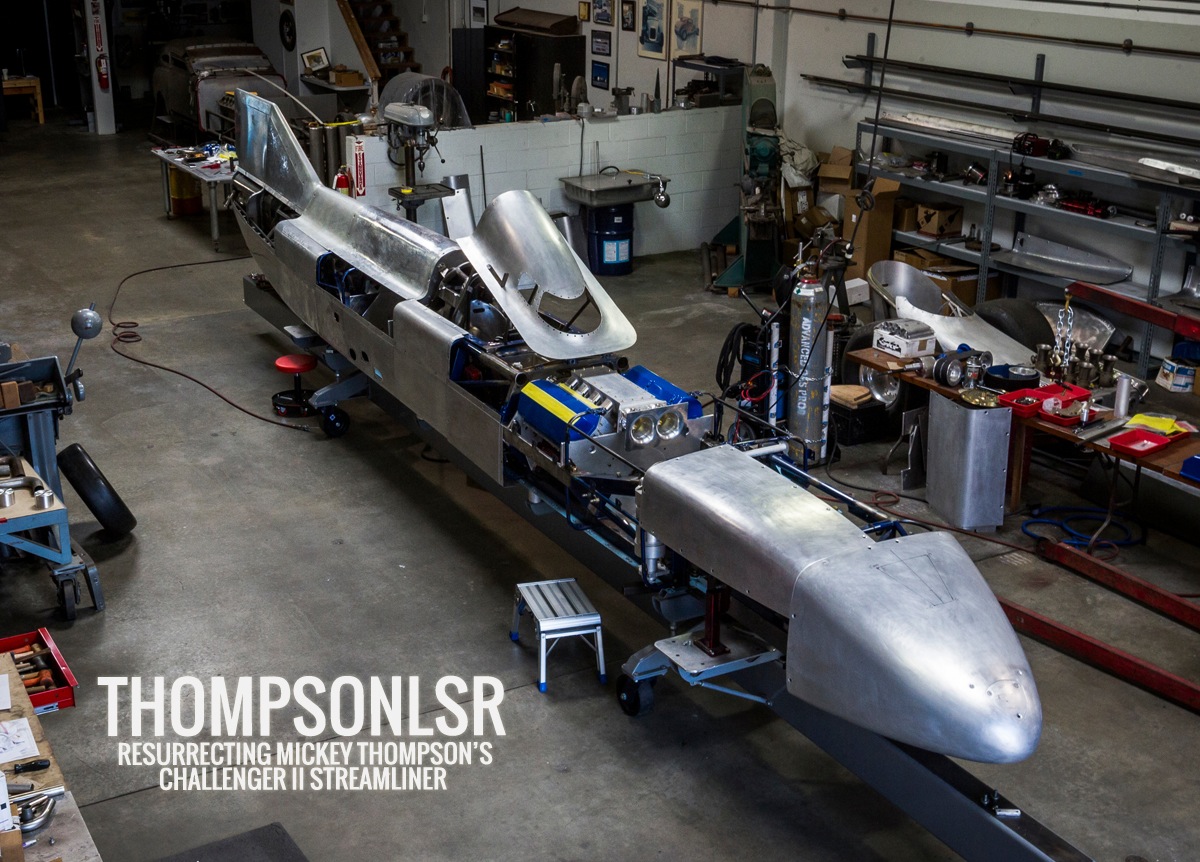We have amazing fans, and they send us a lot of great stuff. We repost most of it to our Facebook Page, but Facebook can be confusing, and we've received several requests to make it more easily accessible. Starting today, we'll be posting PDF copies of old Mickey Thompson articles here, where they are easy to access and read. Please note, a lot of these files are REALLY BIG, so they may take a while to download, especially on mobile devices. For that reason, we've appended the author bylines with the file sizes. Enjoy.
Read MoreNEWS
Stay up-to-date with our progress.
AIRAID® Joins Our Team As A Sponsor
THOMPSONLSR is more than excited to announce that AIRAID® will be joining our team as a sponsor. AIRAID® designs and manufactures the finest premium air filters, throttle body spacers, and cold air intake systems in the industry. In our articles and blog posts we talk a lot about our insistence on using (or building) only the best and most reliable parts for the Challenger II. AIRAID® products were always our first choice when they were available for our needs. Having them as a sponsor is just icing on the cake. Thanks AIRAID®, and welcome to the team!
AIRAID® is a leading manufacturer of Cold Air Intake systems, throttle body spacers, and premium air filters for cars, trucks, and SUVs. Founded in 1997, AIRAID® products continue to drive the performance intake industry with innovative design and technology advancements. Each AIRAID® product line is designed in-house using the latest CAD / CAM software and rapid prototyping tools. Once developed, each product is subjected to exhaustive real-world testing to ensure it delivers maximum performance (measured on our in-house Mustang chassis dynamometer) as well as unmatched fit and finish.
In addition to bolt-on Cold Air Intake systems for production vehicles, AIRAID® is also heavily involved in motorsports of all types. AIRAID® has an extensive line of racing filters that are used by racers competing in dozens of racing series, including NASCAR, NHRA, NMCA, SCORE, BITD, NHRDA, LOORRS, and many more.
All AIRAID® Premium Filters are produced in-house using only the finest materials available and highly specialized manufacturing equipment to ensure a level of quality control no other filter company can match. This is just one of many reasons why all of AIRAID®’s filters are backed by our “No Hassle” Lifetime Warranty. All of AIRAID®’s product lines are proudly manufactured in the USA. For more information about AIRAID® products, visit www.AIRAID.com
Special Delivery
THOMPSONLSR couldn't ask for a better team member, patron, or friend than Eric Hoenig.
August Photo Update
This month's update is all about air intakes, drive shafts, parachute tubes, and the never ending work on the front end. If you're curious about the changes we've made, our upcoming RACER.com Diary will go into a little bit more detail about the modifications.
RACER.com Diary 18: The Final Grind
I’ll be at the salt this week, but the Challenger II will not be with me. My team and I have been beating ourselves to death trying to finish, but the simple fact is that the streamliner is not done, and I’m unwilling to compromise on any aspect of a vehicle intended to go 450mph with me sitting in it. Doing it right takes precedence over getting it done, which is frustrating but necessary.
The good news is that we’ve most likely found a place where we can test within Orange County, which will save us quite a bit of time and a not insignificant amount of money. We’re a couple months off, but the location will allow us to perform some slow speed tests around 170mph, which is adequate for our aero calculations and will let us function test the new drive train without placing too much stress on it.
Work continues of course, and we’re really making progress on the challenging stuff. Lou is finishing off the front spindles, which will then proceed to heat treat and final machining. The side bells that are bolted to the rear end are now finished. They’re fabricated from 17 individual pieces of hand formed 4130 chromoly, and were welded with high quality heat treatable rod. The welds took over 3.5 hours per side, but I was really pleased with the results. We magna fluxed all of the parts before sending them off for heat treatment, and they ended up perfect.
SK Specialties is just finishing the final machining on the front steering, which was far and away the most difficult modification we made to the streamliner. The front axel, inner and outer u-joints, driver plates and associated parts are all made out of wicked 300M alloy and will be out of heat treat by the time I return from Bonneville. They’ll join the transmission shafts (which are being triple splined) and drive hubs on the way to final grind.
Overall, I’m pleased with our progress and the quality of work we are doing. We’re still raising money via Kickstarter, so if you’re interested, pleased head to thompsonlsr.com and click on the link. See you on the salt!
RACER.com Diary 17: The Mystery Box
In order to promote our Kickstarter campaign, we’ve been doing a lot more press work. For the more technically oriented publications, that means explaining in detail the changes we’ve made to the car. When we get to talking about the rear ends, we inevitably get asked the same question. “Did you say Hadley Box? What’s a Hadley Box?”
That’s a reasonable question. The Challenger II has two engines and is four wheel drive. That means it has duplicated drive trains that are mirror copies of each other. In order to achieve this, we actually had to mount the front engine backwards in the streamliner. The drive trains each have three components--a B&J three speed transmission, a Hadley Box, and a custom built rear end with quick change gears. The functions of the transmission and rear end are obvious. The Hadley Box is a little unusual.
Simply put, the Hadley Boxes mechanically connect the front and rear engines via a three piece drive shaft. The shafts coming off of the engines are mounted at equal but opposite 2.5 degree angles. The middle shaft is perfectly level. This connection allows the engines to remained synchronized during our runs.
Strictly speaking, this system is not mandatory. It’s certainly possible to connect both engines independently to the gas pedal. The Hadley Boxes are a safety feature that we’ve devised in order to keep the engines from running away from each other. For example, should the front engine fail during my run, under normal circumstances the rear engine would keep pushing, potentially resulting in a spin and a crash. With the Hadley boxes, the rear engine will mechanically know that the front engine is locked, the clutch will automatically drop it into neutral, and the rear engine will continue to power both sets of wheels independently to a safe stop.
That’s an extreme example, but the principle of communication holds true in less dire circumstances, including wheel slip, which will greatly impact our ability to make traction. As for the name, the Hadley Boxes are christened after Dave Hadley of SK Specialties, the only person crazy enough to build them.
Thanks for following along. See you next week.
July Photo Update
Let's just be upfront about it. This month's photo update is pure indecent parts porn, courtesy of our fantastic team photographer Holly Martin. Enjoy yourselves responsibly.
Our Kickstarter Project is Now Live!
Our project is officially live! You can see it by going here: http://kck.st/18xEkT4, or just clicking the Kickstarter link in the title bar above. If you can help, we'd be grateful for your contribution. If not, please help spread the word! We're depending on you to get the Challenger II back to the salt. To all of those of you who've gotten us this far, please know that we are extremely grateful. We're gonna make this thing happen!
RACER.com Diary 15: Controlled Slip
I have so much left to learn. That, more than anything, is what rebuilding the Challenger II has taught me. We’re in the middle of finalizing the clutch package, and the whole process has proven to be much more complicated and time consuming than expected. Our setup is primarily a modified version of what you’d find on a Top Fuel dragster. We make a lot of power, and run fuel, so we wanted equipment with proven resiliency under those conditions.
The components themselves are a mix of different materials that you wouldn’t expect to find in the same package. Elements are made from titanium, stainless steel, 4340, 4130, cast iron, and sintered metal (friction material). Bob Brooks of AFT is fabricating the parts. He used to run the piston department of Mickey Thompson Enterprises for my dad back in the 60s, so it’s a real pleasure to have him working with us on this project.
Getting the clutch package to perform effectively on the salt is a tricky process. Our tires are only 4 inches wide, and each one will be allocated almost 1000hp. Getting all of that power to the ground without slipping the tires requires delicate tuning, and probably won’t be perfected until we actually get to Bonneville and tinker with the settings on the salt.
Here’s how it works: As soon as the car moves away from the push truck, I’ll release the clutch. This will happen at a relatively slow speed. Anything over 5mph should be enough. As engine RPM increases, the clutch will slowly lock up automatically. I won’t be moving it in and out during the run. This means, in simplified terms, that the clutch will mechanically perform a controlled slip at slow speeds. This unusual procedure is important for two reasons. First, our engines are dry blocks, so if I back off the throttle to counter wheel spin, the engines will not get enough fuel to cool themselves. Second, we need to make as much speed as possible on the bottom end of the course, so if we’re goosing back and forth or not making traction, I’ll be loosing irreplaceable time.
Work continues! See you next week.
RACER.com Diary 14: The Fastest Guy Out There
In last week’s article I mentioned that Bonneville’s different classes weren’t very meaningful to me, because my foremost goal was to be the fastest piston car on the salt. There isn’t an official designation for that, so I called it “the world’s fastest hotrod”. I stand by what I said, but I probably should have predicted the deluge of questions regarding the actual classifications. For the record, when I run the Challenger II, it will be entered as an AA Fuel Streamliner (FS). That’s not the same category my dad was in when he originally drove the car (he used a supercharger), and my class record is technically lower than his was. But just to emphasize, I don’t really care about winning the class. I want to be the fastest person out there, period.
Just out of curiosity, I counted up all of the classes and engine combinations available in the four-wheeled category. I came up with 825. I did the same for the motorcycles, and came up with an even larger number. That didn’t seem right, so I called up Van Butler, head of bikes for the SCTA, and he confirmed that there were almost 1000 different class combinations. That may sound confusing, but I think it’s a good thing. If you are an enthusiast interested in coming to the salt, you have zero excuses. There is a category ripe for conquest with your name on it. The slowest bike record sits at 19.983 MPH. The fastest is 376 MPH. With four wheel cars, the gamut is even larger. Get to work!
The biggest Bonneville event each year is Speed Week. It gets over 600 individual car and bike entries, and is the one that you should attend if you are interested in getting a taste of the salt’s unique culture. There are a few other smaller events during the season, but I’m primarily interested in Cook’s Shootout, which is limited to 8 vehicles, and tends to be populated by very fast streamliners. It’s the only FIA sanctioned event, and the only time I can qualify for an FIA record.
Thank you for all of your questions. Feel free to keep them coming in. See you next week.




















